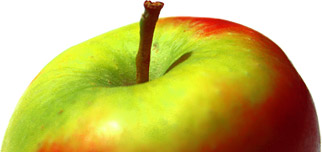An attractive and popular mid-season culinary apple, very versatile in the kitchen, cooks to a puree.
USDA identification images for Arthur W Barnes
The identification paintings in the USDA Pomological Watercolor Collection span the years 1886 to 1942.
Citation: U.S. Department of Agriculture Pomological Watercolor Collection. Rare and Special Collections, National Agricultural Library, Beltsville, MD 20705.
Visitor reviews
- 30 Mar 2017 CUMBRIA, United KingdomPuzzled by your statement "Use/keeping-one week". Mine are picked from October, can stay on the tree well into November,and keep in store until March. John Bultitude supports this.
- 01 Jan 2010 United KingdomStarter post
Tree register
United Kingdom
- Bill Potter in Crosby, Maryport, CUMBRIA
- Bill Potter in Crosby, Maryport, CUMBRIA
- Clifford Cain in Bawtry, Doncaster, SOUTH YORKSHIRE
- Denise Casanova in Mildenhall, SUFFOLK
- Meadowcopse in Chester, CHESHIRE
Origins
- Species: Malus domestica - Apple
- Parentage: Gascoyne's Scarlet x Cox's Orange Pippin
- Originates from: United Kingdom
- Introduced: 1902
- UK National Fruit Collection accession: 1923-109
- Some historical details taken with kind permission from 'The New Book of Apples' by Joan Morgan and Alison Richards , illustrated by Elisabeth Dowle, published by Ebury Press, 2002.
Identification
- Country of origin: United Kingdom
- Fruit colour: Red
Using
- Picking season: Mid
- Keeping (of fruit): 1 week
- Cooking result: Puree
- Food uses: Culinary
Growing
- Flowering group: 3
- Ploidy: Diploid
- Vigour: Average vigour
- Attractive features: Attractive flowers
- Self-fertility: Not self-fertile
Where to buy fresh fruit
No orchards have registered as growing this variety. If you grow this and want to register please go to our Orchard Registration form.
References
- Apples of England (1948)
Author: Taylor

